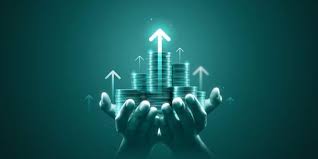- Your cart is empty
- Continue shopping

In the fast-paced world of financial markets, forex algorithmic trading Trading Asia stands at the forefront of innovation. Forex algorithmic trading, in particular, has gained significant traction among traders and institutional investors alike. This form of trading utilizes algorithms and automated systems to execute trades at speeds and frequencies that are impossible for humans to match. But what does it really mean, and how can traders leverage it for profitability?
What is Forex Algorithmic Trading?
Forex algorithmic trading, often referred to simply as algo trading, involves the use of computer algorithms to analyze market data and execute trades. These algorithms can make decisions based on predefined criteria, such as price movements, market trends, and historical data. The primary goal is to optimize trading performance, allowing traders to take advantage of market fluctuations with minimal human intervention.
The Advantages of Algorithmic Trading
One of the most significant benefits of Forex algorithmic trading is its ability to execute trades with exceptional speed. Algorithms can rapidly analyze complex data sets and execute trades in milliseconds, providing a competitive edge. Here are some advantages:
- Increased Efficiency: Automated systems can handle multiple trades simultaneously, allowing traders to capitalize on numerous opportunities across various currency pairs.
- Consistency: Algorithms do not suffer from emotional biases, ensuring that trading decisions are based purely on data and logic. This helps to maintain consistent trading strategies over time.
- Backtesting Capability: Traders can test their algorithms on historical data to evaluate their performance before using them in live markets. This helps in refining strategies and reducing potential risks.
- 24/5 Trading: Algo trading can operate around the clock, taking advantage of various trading sessions worldwide, which is particularly beneficial in the Forex market that operates 24 hours a day from Monday to Friday.
Challenges of Forex Algorithmic Trading
While there are many advantages, Forex algorithmic trading is not without its challenges. Understanding these challenges is crucial for traders who wish to engage in this approach:

- Technical Complexity: Developing and maintaining a robust trading algorithm requires significant technical know-how and expertise in programming and financial markets.
- Market Volatility: Algorithms can sometimes react poorly to sudden market changes or black swan events. A well-tested strategy may still incur losses during unusual market conditions.
- Risk of Over-Optimization: Traders may fall into the trap of curve fitting their algorithms to past performance, which can lead to disappointing results in live trading.
- Dependence on Technology: Algorithmic trading relies heavily on technology and infrastructure. Any technical failure, such as connectivity issues or software bugs, can lead to significant financial losses.
How to Get Started with Forex Algorithmic Trading
If you’re interested in exploring Forex algorithmic trading, there are several steps to consider:
- Learn the Basics: Understanding the fundamentals of Forex trading and market analysis is essential before diving into algorithmic trading.
- Choose a Trading Platform: Select a trading platform that supports algorithmic trading and offers access to the necessary tools and historical data.
- Develop a Strategy: Create a trading strategy that includes clear entry and exit points, risk management, and performance metrics. Consider using technical indicators that align with your strategy.
- Backtest Your Algorithm: Use historical data to test your algorithm and ensure that it performs well under various market conditions. Refine your algorithm based on backtesting results.
- Start Trading: Once you feel confident in your algorithm, it’s time to deploy it in live trading. Start with a demo account to gain experience without risking real money.
The Future of Forex Algorithmic Trading
As technology continues to advance, the landscape of Forex algorithmic trading is likely to evolve even further. Machine learning and artificial intelligence are expected to play increasingly prominent roles in algorithm development, enabling systems to learn and adapt in real-time. Traders who embrace these advancements may find themselves at a significant advantage in the marketplace.
Conclusion
Forex algorithmic trading holds great promise for traders looking to enhance their trading strategies and achieve greater profitability. While it offers numerous advantages, it also comes with its own set of challenges that traders must navigate. By thoroughly understanding the intricacies of algorithmic trading and investing time in developing robust algorithms, traders can leverage technology for success in the dynamic Forex market.
